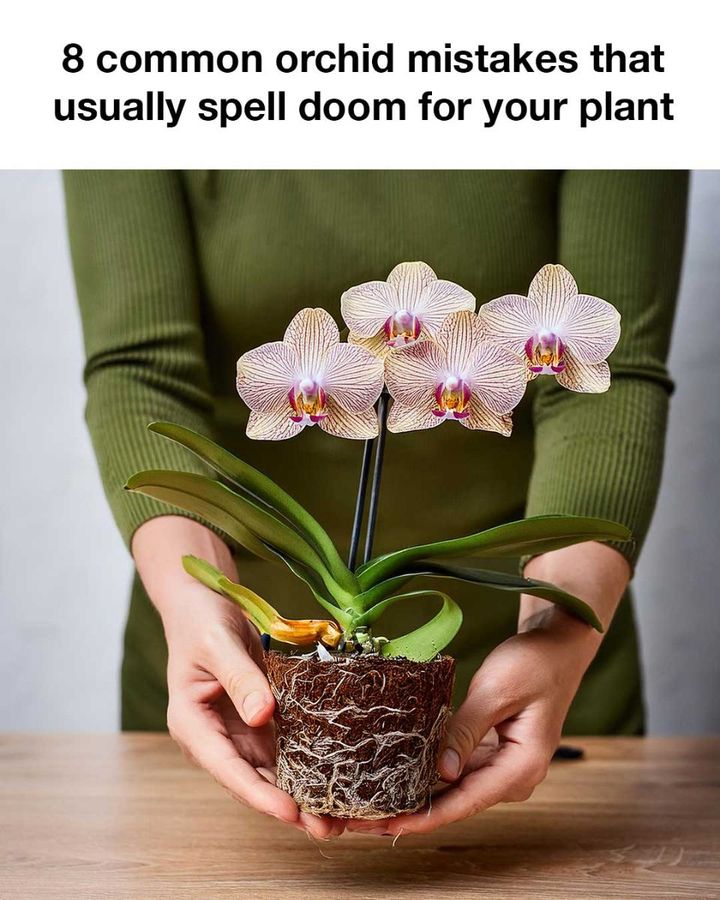Insufficient or Excessive Lighting

So glad I found this list!
Orchids need bright, indirect light to thrive. Placing them in a spot with too little light will inhibit their growth and flowering, while too much direct sunlight can scorch their leaves. Finding the right location, such as an east-facing window, can provide ideal light conditions. Consider using sheer curtains to filter harsh sunlight and protect your orchid from direct exposure.
Unsuitable Temperature and Humidity Levels
Orchids flourish in warm, humid environments, similar to their native tropical habitat. Maintaining a stable temperature between 65-75°F (18-24°C) and a humidity level of around 50-70% is ideal. Sudden temperature changes or prolonged exposure to cold drafts can harm your orchid. Using a humidifier or placing a humidity tray beneath the orchid can help maintain these levels, especially during dry seasons.
Inadequate Potting Medium
The right potting medium is essential for orchid health. Orchids require a well-draining medium that allows airflow to the roots. Common choices include bark, sphagnum moss, or a specialized orchid mix. Using regular potting soil can suffocate the roots and retain too much moisture. Repotting your orchid every 1-2 years will also help renew the medium and remove any decaying material.
Overlooking Air Circulation Requirements
Good air circulation is vital to preventing fungal and bacterial infections in orchids. Stagnant air can lead to mold growth and other diseases. Ensure your orchid is in a space with adequate airflow, but avoid placing it in a direct draft from vents or fans. Gentle, consistent air movement can help keep your orchid healthy and free from illnesses.
Failing to Monitor for Pests and Diseases
Orchids are susceptible to pests like scale, mealybugs, and aphids, as well as diseases such as root rot and bacterial infections. Regularly inspecting your plant for signs of trouble, such as discolored leaves, sticky residue, or unusual spots, can help you catch issues early. Treat infestations promptly with the appropriate remedies, such as insecticidal soap or neem oil, and practice good hygiene by sterilizing tools and cleaning pots.
Neglecting Fertilization Needs
Orchids need nutrients to grow and bloom, but over-fertilizing can be detrimental. A balanced, water-soluble orchid fertilizer applied at half-strength every 2-4 weeks during the growing season will suffice. Avoid fertilizing during the plant’s dormant period and always follow the instructions on the fertilizer package. Flushing the potting medium with water occasionally can help prevent salt buildup from fertilizers.
Incorrect Pruning Methods
Pruning orchids incorrectly can stress the plant and inhibit future growth. Always use sterilized scissors or pruning shears to remove dead or yellowing leaves and spent flower spikes. Avoid cutting too close to the base or damaging healthy tissue. Proper pruning encourages new blooms and helps maintain the overall health of the plant.
Conclusion and Preventative Measures
Caring for orchids might seem daunting, but understanding and avoiding these common mistakes can set you up for success. Regular monitoring, proper environmental conditions, and attentive care are key to keeping your orchid happy and healthy. By addressing these eight areas, you’ll be able to enjoy the exquisite beauty of your orchid for years to come. Remember, patience and consistency are your best allies in orchid care.
